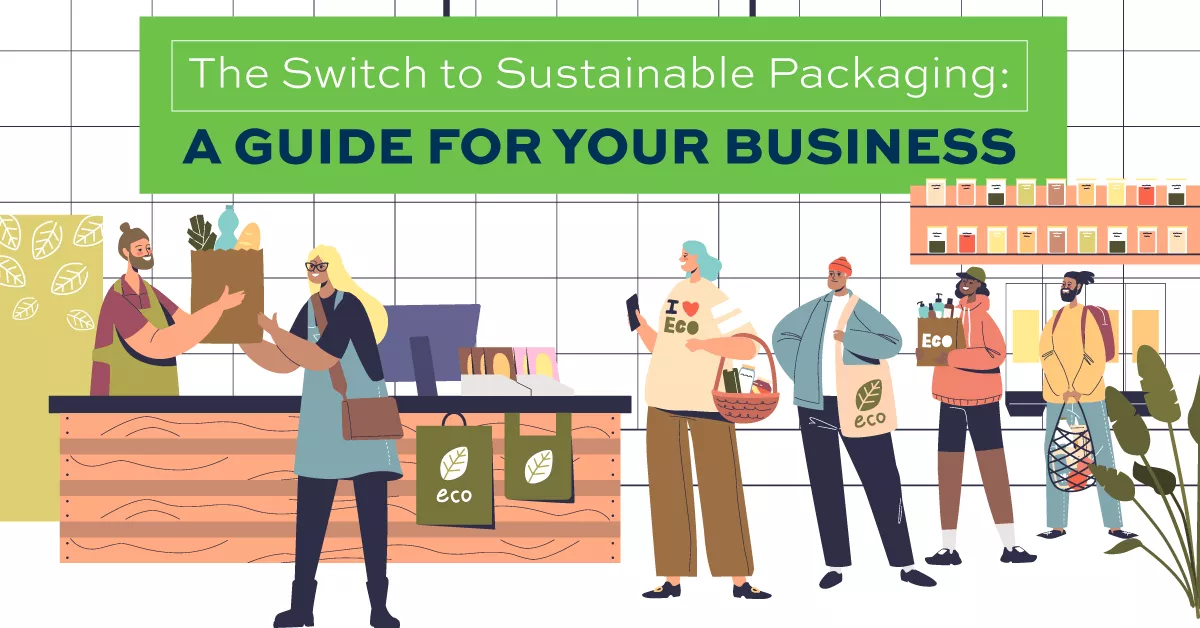The Switch to Sustainable Packaging: A Guide for Your Business
The global sustainability movement is reshaping the business landscape. Consumers worldwide, including those in the United States, Germany, Italy, Brazil, India, and Indonesia, express significant concern about the environmental impact of product packaging.
Businesses seeking to meet customer expectations and contribute to a greener future should prioritize sustainable packaging practices. It includes partnering with a reputable sustainable packaging company that can provide eco-friendly solutions.
Choosing sustainable materials for packaging minimizes environmental impact, conserves resources, and can attract loyal customers. Strategies include compostable and recyclable materials while reducing reliance on fossil fuel-derived resources and processes.
This comprehensive guide helps businesses understand why sustainable packaging is important and choose suitable options that align with their values and industry requirements.
Jump To Section:
- What is Sustainable Packaging?
- What Makes Packaging Sustainable?
- Benefits of Sustainable Packaging
- Types of Sustainable Packaging Materials
- Sustainable Packaging Strategies
- Integrate Sustainability into Business Strategy

What is Sustainable Packaging?
Sustainable packaging involves choosing eco-friendly materials and production practices throughout the packaging lifecycle. It entails selecting renewable, recyclable, and compostable materials while minimizing environmental impact through optimized production processes.
For instance, biodegradable materials such as bioplastics, derived from renewable resources, offer a sustainable alternative to conventional plastics. These materials can naturally break down over time, reducing their environmental impact and minimizing waste accumulation.
Using recycled and recyclable materials such as paper, cardboard, glass, metal, and plastic also diminishes the demand for virgin resources and decreases waste generation.
Meanwhile, the demand for sustainable packaging is increasing, with over 60% of global customers considering the environmental impact when purchasing.
Learn more about sustainable packaging with:
- Packaging Sustainability: Regulatory Trends Across the World
- Most Sustainable Food & Beverage Packaging
- Sustainable Packaging Trends for 2023 and Beyond
What Makes Packaging Sustainable?
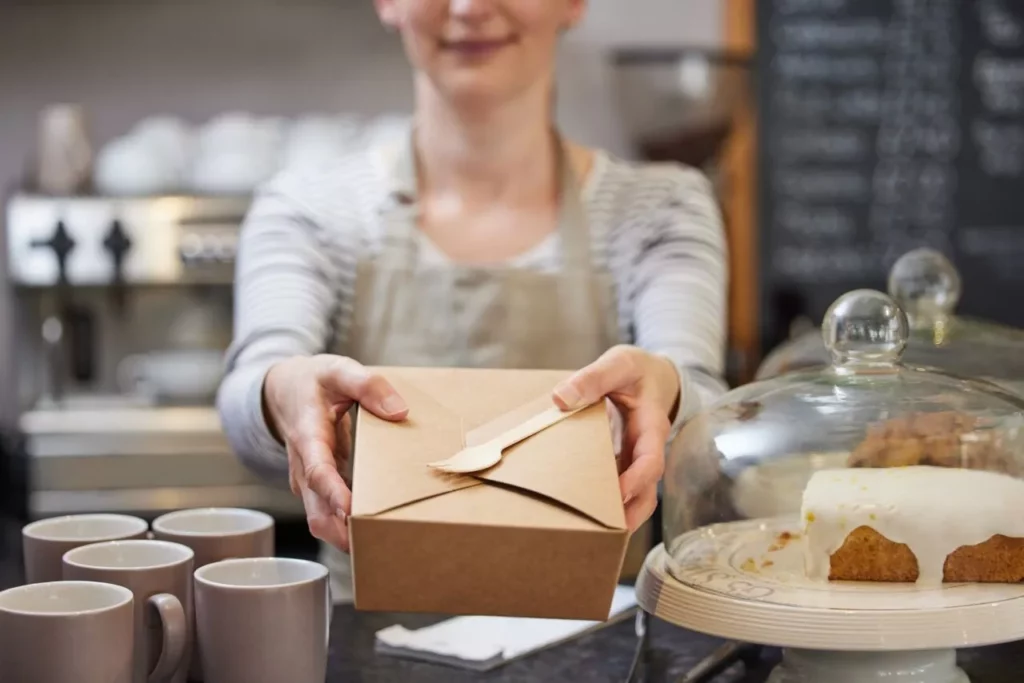
According to a recent report, sustainability-marketed products in the consumer packaged goods industry grew rapidly, outpacing conventional products and accounting for 17.3% of purchases in 2022.
To guide businesses in achieving sustainable packaging, the Sustainable Packaging Coalition (SPC) has put forward eight critical criteria:
1. Safe benefits for communities
Sustainable packaging should prioritize the safety of individuals and communities throughout its lifecycle. It should promote economic development and social well-being by easing the distribution and delivery of products.
After its useful life, the subsequent waste should be manageable at the community level. Intelligent packaging design plays a crucial role in mitigating potential adverse environmental impacts.
2. Use of innovative packaging materials
Sustainable packaging minimizes costs through efficient and safe lifecycle design and sourcing. This process involves improved design practices, resource optimization, learned material selection, design for recovery, and source reduction.
3. Minimized use of fossil fuels
Companies should utilize sourcing, manufacturing, transporting, and recycling packaging materials using renewable energy sources such as solar, wind, hydroelectric, biomass, tidal, and geothermal power.
Transportation should prioritize hybrid vehicles or alternative fuel options such as biodiesel, electricity, and ethanol. Optimal energy efficiency fosters sustainability while generating positive economic and environmental outcomes.
4. Recyclability
Materials should be recoverable through biological or industrial processes to achieve sustainable packaging and compatibility with new production systems. Using recycled, bio-based, or renewable materials from well-managed sources promotes sustainable material flow and resource conservation.
5. Produced using eco-efficiency strategies
The creation of packaging materials should support clean technology and eco-efficient practices. Conserving resources, eliminating toxic materials, and reducing emissions and waste during production are vital strategies to minimize environmental impact.
Adhering to best practice standards enhances manufacturing performance while reducing costs and improving long-term profitability.
6. Contains no harmful substances
Packaging materials should not contain chemicals that release harmful substances throughout their lifecycle. Even slight amounts of these compounds can have significant consequences due to the scale and volume of packaging and associated wastes.
Ensure all chemical ingredients, including additives, inks, adhesives, and coatings, are safe for humans and the environment, minimizing or eliminating associated hazards.
7. Facilitates material recovery
Effective, sustainable packaging begins with informed material selection and a thorough understanding of performance requirements. It includes considering energy use during the package’s lifecycle, assessing the impact of materials in various end-of-life scenarios, and designing for effective material recovery.
Companies should optimize packaging materials to minimize waste and maximize materials and energy usage throughout the product’s lifecycle, starting from the early design phase.
8. Designed for biological recovery
Closed-loop systems are essential for producing new items from material waste. Businesses should manufacture packaging materials in organic and closed-loop cycles, promoting a circular economy and sustainable resource utilization.
Learn more about how businesses achieve sustainable packaging with:
- Product Packaging for a Circular Economy: Everything You Need to Know
- How to Market Your Brand’s Sustainability Advantage: A Guide to Green Marketing
- 5 Ways Packaging Design Can Help End the Plastic Waste Crisis
Benefits of Sustainable Packaging
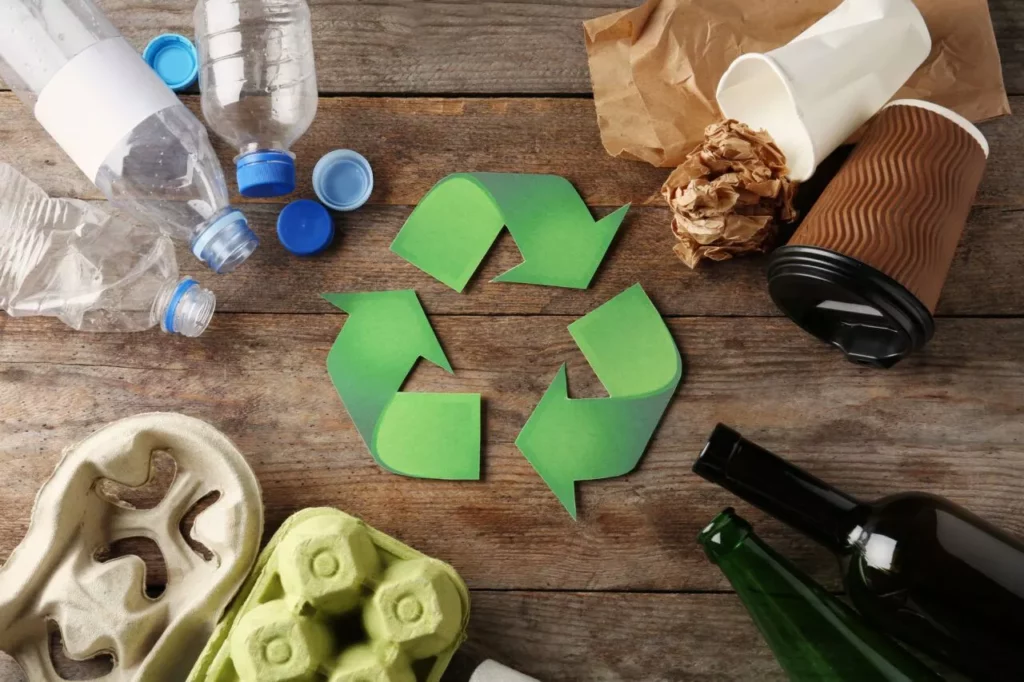
The adoption of sustainable packaging brings numerous environmental and social benefits to businesses. By embracing sustainable packaging practices, various organizations can contribute to a greener future while reaping various business advantages.
• Reduction in carbon footprint
Sustainable packaging aids in minimizing carbon emissions by utilizing eco-friendly materials and implementing energy-efficient production processes. This proactive approach significantly reduces environmental impact and helps combat climate change.
For instance, selecting lightweight, biodegradable materials lower transportation emissions, while adopting renewable energy in manufacturing reduces reliance on fossil fuels.
• Positive brand image and reputation
Embracing sustainable packaging demonstrates environmental responsibility, fostering a positive brand image and attracting environmentally conscious customers for increased loyalty and market share.
• Waste reduction and resource conservation
Sustainable packaging strategies contribute to waste reduction and efficient resource utilization. Businesses can minimize waste generation and promote a circular economy by employing recyclable, compostable, or recycled-content materials.
Optimal packaging designs that use fewer materials and innovative approaches, such as refillable or reusable packaging, further support resource conservation.
• Enhanced social impact
Sustainable packaging initiatives extend beyond the environment and have broader social implications. They foster social responsibility by promoting fair trade practices, supporting local economies, and ensuring responsible production methods.
For instance, businesses that source packaging materials from local suppliers contribute to community development and upliftment. Sustainable packaging also prioritizes the well-being of workers throughout the supply chain by advocating for safe and fair working conditions.
• Regulatory compliance and future-proofing
Adopting sustainable packaging practices ensures compliance with evolving environmental regulations and positions businesses for future regulatory requirements. Governments worldwide are implementing stricter rules to reduce packaging waste and promote sustainability.
Proactively choosing sustainable packaging helps businesses stay ahead of regulatory changes, mitigating potential penalties or market restrictions.
• Cost savings and operational efficiency
Sustainable packaging strategies can lead to cost savings and operational efficiencies. Lightweight packaging materials reduce transportation costs, while optimized designs maximize storage and shelf space utilization.
Incorporating eco-efficient manufacturing processes and energy-saving technologies can lower operational expenses. Businesses can redirect these cost savings towards innovation, enhancing customer experiences, or further sustainability initiatives.
Learn more benefits of sustainable packaging through:
- Lightweighting in Packaging: The Pros and Cons
- 7 Ways Your Business Can Benefit from Corrugated Packaging
- Sustainable Packaging Statistics: Why Eco-Friendly Packaging Matters
Types of Sustainable Packaging Materials
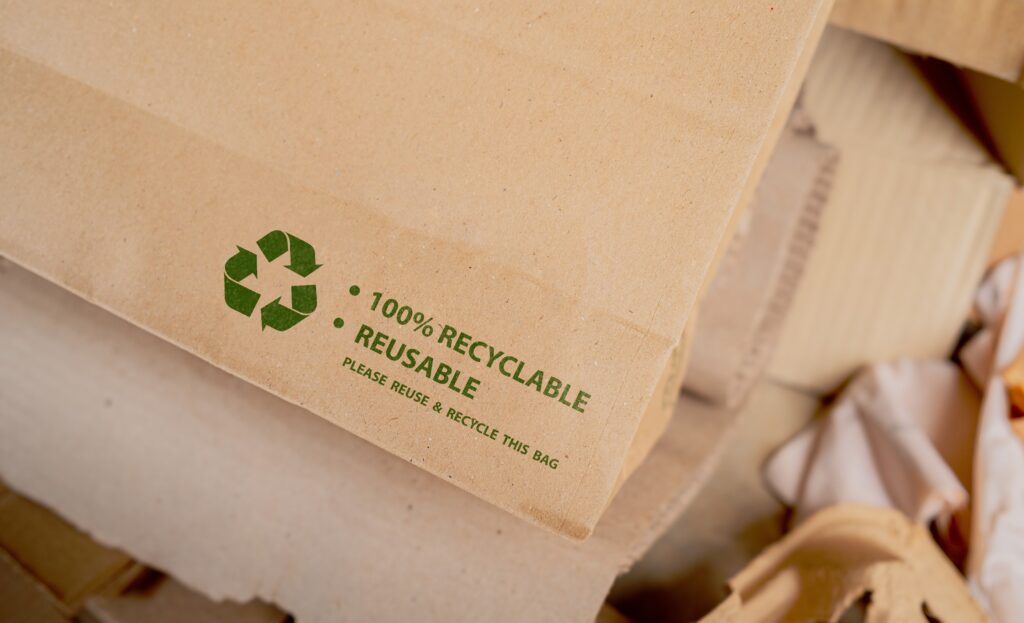
To reduce environmental impact and meet consumer demand for eco-friendly products, businesses must prioritize using sustainable packaging materials. Here are some key sustainable packaging materials, their characteristics, benefits, and real-life examples.
Biodegradable materials
1. Bioplastics
Bioplastics are packaging materials from renewable sources such as plant starches or biomass. They offer an eco-friendly alternative to traditional plastics, as they can biodegrade under certain conditions.
Examples include polylactic acid (PLA) from cornstarch and polyhydroxyalkanoates (PHA) derived from plant oils.
2. Bio-based materials
Manufacturers derive these materials from renewable resources, such as plants or agricultural waste. They offer reduced environmental impact compared to materials derived from fossil fuels.
Examples are packaging made from sugarcane bagasse, wheat straw, or bamboo fibers.
Recycled and recyclable materials
1. Recycled paper
Packaging products made from recycled paper fibers help conserve forests, reduce energy consumption, and minimize waste generation. Companies use them for various applications, such as boxes, bags, and labels.
2. Cardboard
Composed of recycled paper fibers, cardboard is a versatile and recyclable packaging material for various consumer products, including shipping boxes, displays, and cartons.
3. Glass
Glass packaging is highly recyclable and reusable. By choosing glass containers, businesses contribute to resource conservation, as they can recycle glass indefinitely without losing quality. Examples include glass bottles and jars for beverages, cosmetics, and food products.
4. Metal
Metals such as aluminum and steel are easily recyclable and highly durable, making them suitable for packaging applications. Using recycled metal reduces the demand for new raw materials and helps conserve resources.
Metal cans, aerosol containers, and aluminum foil are common examples.
5. Plastic
Certain types of plastic, particularly those marked with recycling codes, can be recycled and transformed into new products. Using recycled plastic helps divert waste from landfills and reduces the need for virgin plastic production.
Some recyclable plastic items include plastic bottles, containers, and films.
Compostable and plant-based materials
1. Plant-based plastics
Derived from renewable resources such as corn or sugarcane, plant-based plastics offer a compostable alternative to traditional plastics. These materials have a reduced carbon footprint and can break down into natural elements under proper composting conditions.
2. Compostable packaging
Made from organic materials such as cellulose, bagasse, or biodegradable polymers, compostable packaging provides a sustainable end-of-life solution. These materials can fully biodegrade in composting facilities, minimizing environmental impact.
Inventions made by some companies are compostable food containers, coffee cups, and cutlery.
Sustainable alternatives to single-use plastics
1. Bamboo
Bamboo-based packaging offers a renewable and biodegradable option. Sturdy and versatile, bamboo finds use in various packaging applications, such as boxes, trays, and utensils.
2. Mushroom-based packaging
Using mycelium, the root structure of mushrooms, this innovative material can be molded into various shapes and provides a fully compostable packaging solution. Mushroom-based packaging offers an eco-friendly alternative to traditional foam or plastic cushioning materials.
Learn more about the diverse types of sustainable packaging materials through:
- The Bioplastics Truth: What and How Sustainable Are They?
- 6 Types of Recyclable Packaging Materials
- Mycelium Packaging Applications: How Mushrooms Are Transforming The Packaging Market
Sustainable Packaging Strategies
Brands can incorporate eco-friendliness into packaging operations and production through various approaches. Some strategies are:
1. Educate consumers about recycling best practices
One can educate consumers about recycling best practices by incorporating a general label on the product, featuring a recycling icon alongside the terms “reusable” or “recyclable.”
Encouraging the buyers to recycle the product and emphasizing the environmental significance of recycling is beneficial. Social media campaigns can also raise awareness about proper recycling practices.
2. Utilize eco-friendly packaging materials
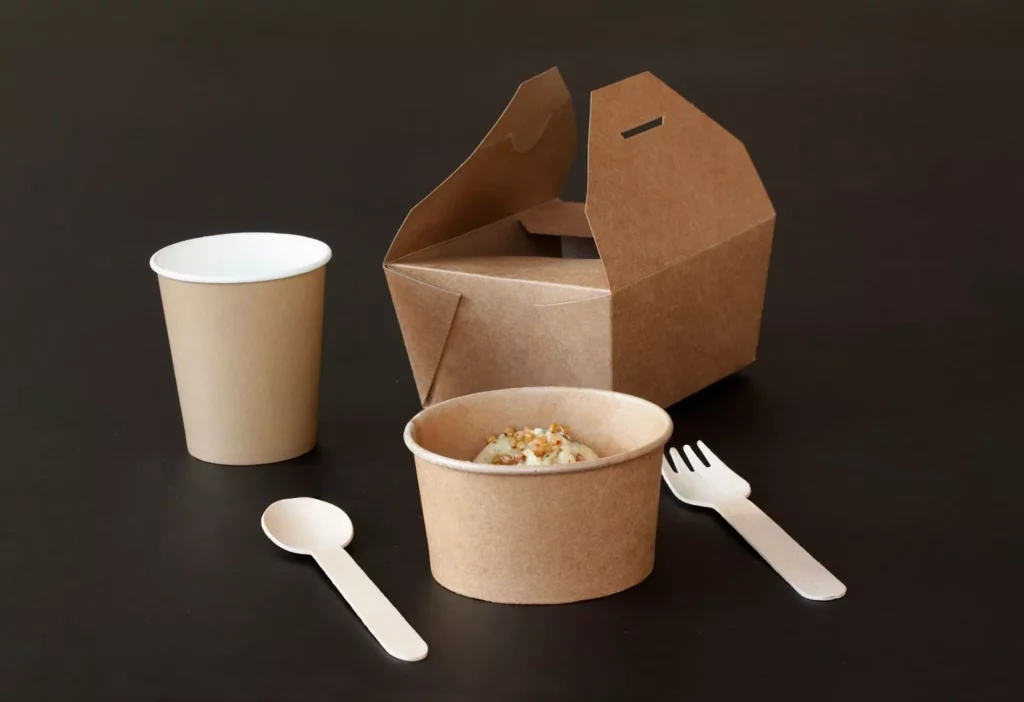
When selecting packaging materials such as boxes, containers, or mailers, selecting recycled packaging materials is advisable. These materials contribute to sustainability by extending the lifespan of previously used items.
Commonly recycled packaging materials include unbleached paperboard and kraft paper derived from wood fibers or recycled waste paper.
Brands can incorporate recycled plastic materials, such as bottles and single-use bags, into mailers and containers, reintroducing them into the supply chain.
3. Incorporate plant-based materials
Plant-based packaging materials from seaweed, corn, mushrooms, and food waste offer sustainable alternatives. The suitability of specific packaging options depends on the product requirements.
For instance, bioplastics derived from cornstarch and mushrooms offer durable plant-based packaging solutions that protect food products during shipping without affecting their flavor.
4. Consider recycling-friendly or wash-off labels
Wash-off labels comprise multiple layers, including a wash-off adhesive, polypropylene film, and polyethylene terephthalate liner. When organizations remove these prime labels, the glue and ink remain, preventing water pollution during washing.
Brands must carefully choose the adhesives used in labels, selecting compostable materials to align with sustainability goals. Non-compostable adhesives can contaminate compost, while non-recyclable ones may cause damage during recycling.
The product manager must carefully select adhesives based on the packaging materials and specific product requirements, particularly for food and beverage items exposed to varying temperatures and moisture.
5. Explore biodegradable alternatives
Incorporating packaging alternatives that facilitate composting and biodegradability strengthens sustainability efforts.
Compostable packaging from materials consumers can compost at home and commercially, often derived from plant-based polymers, provides a sustainable packaging solution. Such materials break down in compost, contributing to the reduction of waste and environmental impact.
6. Partner with manufacturing companies employing sustainable practices
Collaborating with sustainable packaging manufacturers that prioritize sustainability reinforces eco-friendly strategies and techniques.
Before finalizing supplier agreements, one must inquire about the product packaging manufacturer’s processes and practices. Partnering with companies that value sustainability helps align sustainable practices throughout the supply chain.
Learn more about sustainable packaging strategies from:
- Packaging Development Considerations: Inflation, Labor, Supply Chain
- What are Compostable Labels? A Guide to Applications and Certification
- Understanding Sustainable Labels: Materials and Tips to Consider
Integrate Sustainability into Business Strategy
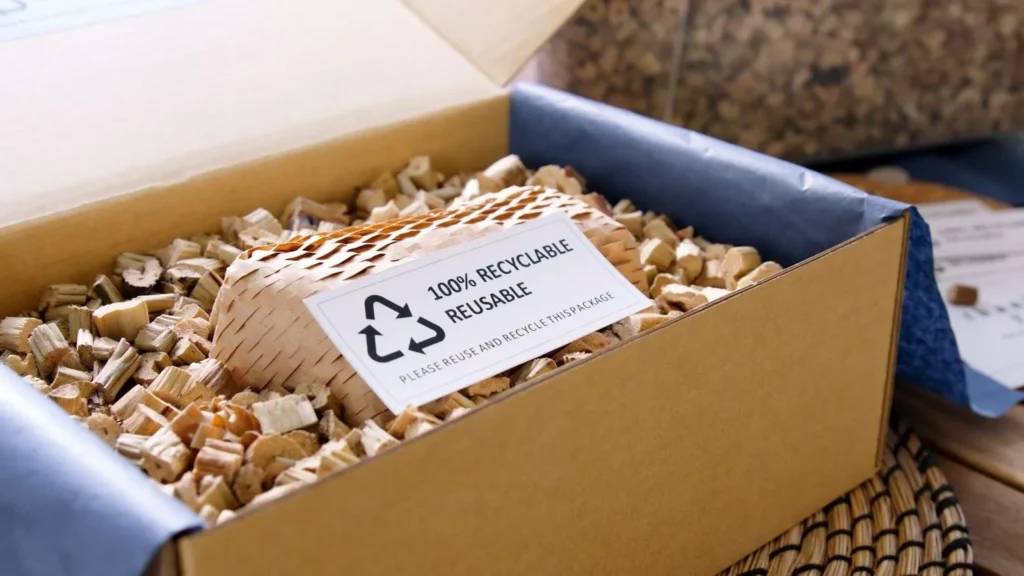
In today’s dynamic market, integrating sustainability into your business strategy is not just a trend—it’s a crucial factor in building brand value and driving long-term profitability.
At Meyers, we are committed to sustainable packaging and minimizing environmental impact. As industry experts, we partner with businesses such as yours to provide innovative packaging solutions that align with your sustainability initiatives and reduce your ecological footprint.
Our packaging solutions surpass regulations and enable you to actively reduce waste, conserve resources, and enhance your brand’s eco-conscious reputation.
Contact us today to learn more and explore how our expertise can help shape your brand’s brighter, more sustainable future, one package at a time.

